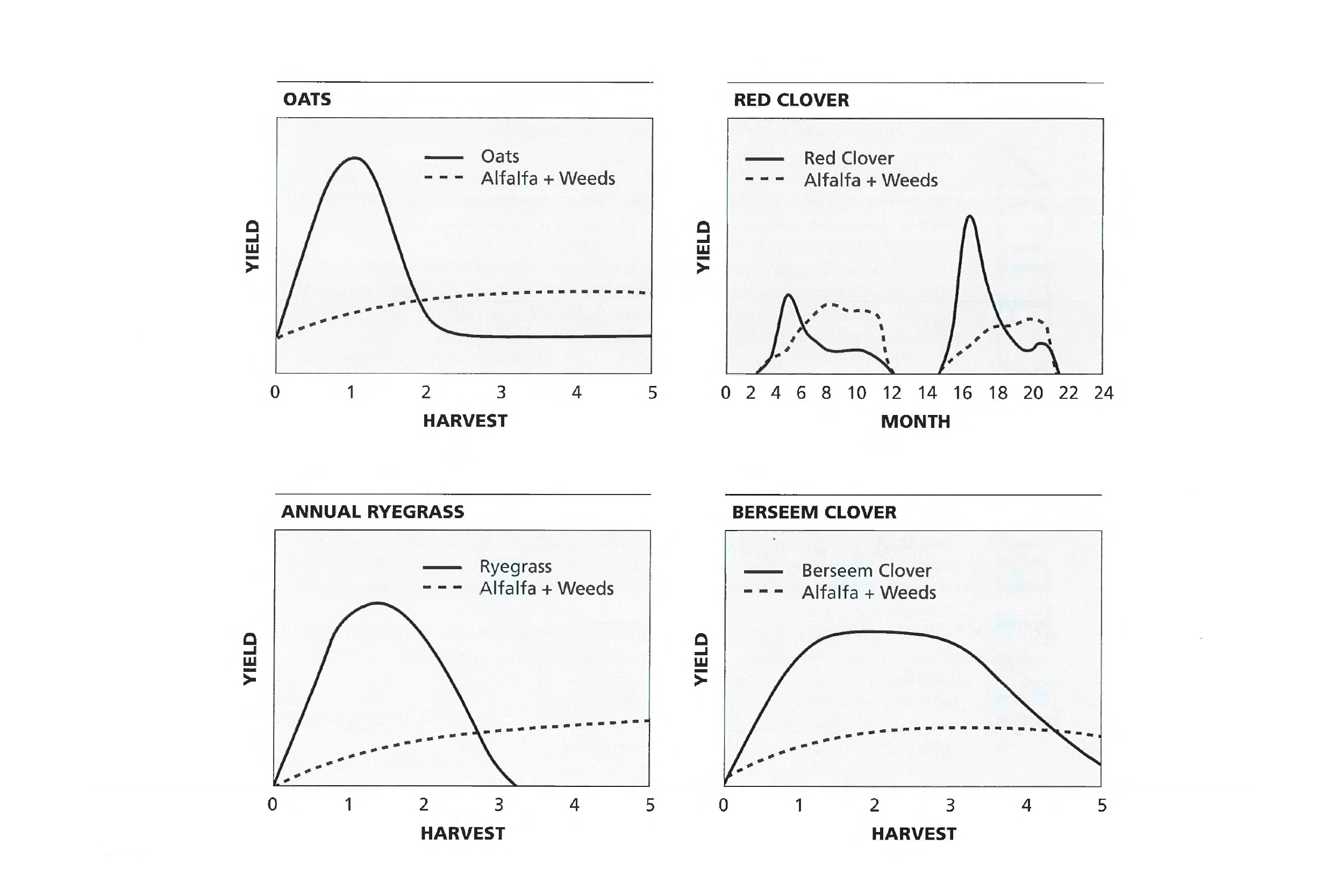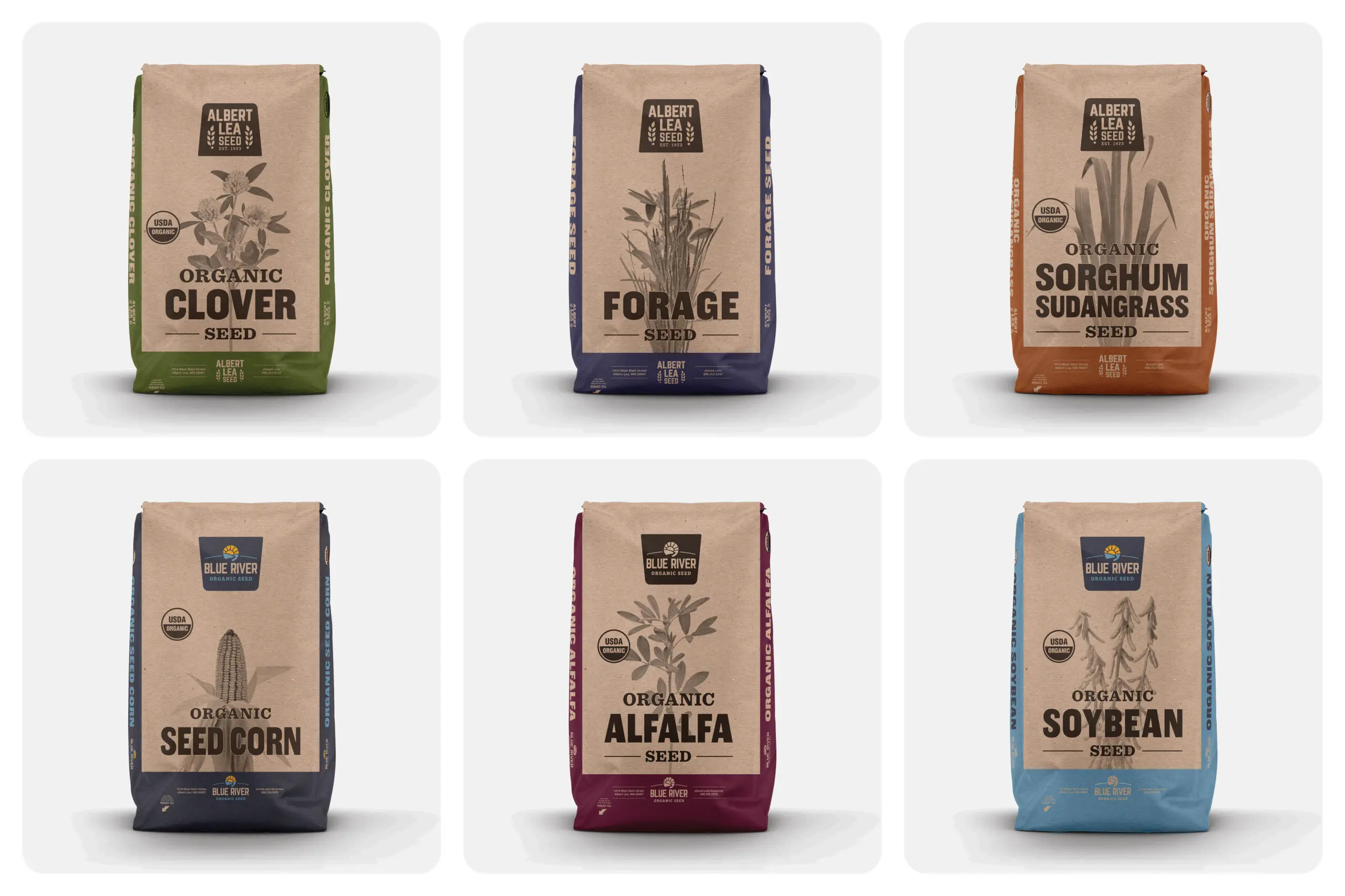After Evaluation: What’s Next for Alfalfa Fields?
By Margaret Smith, PhD
Albert Lea Seed Agronomist
Is your alfalfa stand thinning or are there winterkilled areas in your fields? Once you’ve evaluated the stand, what’s next? Depending on your stems counts per square foot OR plants per square foot, options vary based on the age of your seeding.
First Year Following Seeding
If the stand has 40 or more stems or 12 or more plants per square foot:
-
- Keep the stand for this year; yield will be somewhat reduced but worth keeping
- Stand is thick enough to prevent much success with interseeding
- Evaluate again this fall
If the stand has 39 or fewer stems or fewer than 12 plants per square foot:
Second and Subsequent years Following Seeding
In the second and subsequent years following seeding, enough autotoxic compounds have been produced to prevent new alfalfa seedling establishment; DO NOT interseed alfalfa
If the stand has 40 or more stems or 12 or more plants per square foot:
-
- Keep the stand for this year; yield will be reduced, but likely worth keeping
- Stand is thick enough to prevent much success with interseeding
- Evaluate again this fall
If the stand has 39 or fewer stems or fewer than 12 plants per square foot:
Your options are:
1. Keep stand:
-
- Interseed cool-season grasses and/or other legumes into the alfalfa, and keep the stand for one or two more years.
2. Take one hay cutting, then terminate
-
- Plant corn, corn silage, milo, or soybeans (see Blue River and Viking pages for corn and soybean options)
- Plant a warm-season, annual grass forage when soils reach 60-620° F
3. Where stands are very thin and spotty across the field, terminate now
-
- Plant corn, corn silage, milo, or soybeans (see Blue River and Viking pages for corn and soybean options)
- Plant a warm-season, annual grass forage when soils reach 60-620° F
Interseeding Options
Either a small grain, forage grass, or forage legume may be interseeded into very thin stands. Typically, a mixture will yield more than pure alfalfa on an annual basis, with most of the grass tonnage produced in the first cutting (see Fig. 1).
Figure 1. Yield patterns for a few legumes and grasses overseeded into alfalfa in central California. Note there is no scale on the yield axis. These graphs only reflect yield trends. Actual yields will depend on temperatures, rainfall and management.

From Overseeding and Companion Cropping in Alfalfa, University of California
An added benefit of interseeding is that additional plants—particularly grasses—will help suppress weeds that are inevitable in thin or partially winter killed stands. Species choices for interseeding vary on how long you plan to keep the stand.
Interseeding for hay in 2025 only:
-
- Use oats, barley, triticale, annual or Italian ryegrass, or berseem clover
Interseeding for 2 more years of hay:
-
- Use red clover, festulolium, orchardgrass, perennial ryegrass, Albert Lea Seed’s Renovator Mix, or a combination of these species
For additional information and a printable resource for alfalfa stand decisions, see Spring Options for Reduced Alfalfa Stands.
Call us at 800.352.5247 to discuss your options!
___
Resources:
- Evaluating Alfalfa Stands Part II—Renovation Options, University of Nebraska
- Options for Managing This Alfalfa Stands, University of Kentucky
- Overseeding and Companion Cropping in Alfalfa, University of California
- Replacing Thin Alfalfa, University of Nebraska
- Seeding Alfalfa into an Existing Alfalfa Stand, University of Wisconsin
- Spring Options for Reduce Alfalfa Hay Stands, Albert Lea Seed
- What to Do With Thinning Alfalfa Stands, University of Maryland
